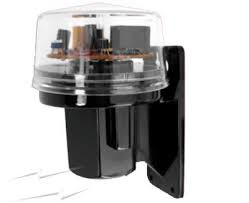How Do Photocells Work
A photocell (photoconductive or photovoltaic) is an electrical device that connects and communicates with a transformer. It is a sensor/ resistor that convert light into electricity. When light falls, it transmits energy into the semiconductor part of the cell.
 |
| Photocell Suppliers Dubai : SPPE |
What is photocell made up of?
It is made of two types of semiconductors because, when it is connected to a battery; it conducts a little electric current; called “n” and “p.” The n-type semiconductor is so named because some of its atoms have extra electrons, which have a negative charge. Ap-type semiconductor: some of its atoms have fewer electrons.
Working of Photocell:
Photocell sensors work like a timer switch powering light fixtures off and on automatically during a set time.
The production of electricity in it begins where the two types of semiconductors are joined together. It is called the p-n junction.When the sun shines on it, its photons get activated. The said bundle of photons can energize an electron and release it from its covalent bond. This produces an electron that is free to move and leaves behind a hole in the covalent bond that can accept another electron.
If this freed electron is in the p-n junction region, it will be pulled across the junction into the n-type semiconductor by the small voltage at the junction. A freed electron in the p-type semiconductor will then fill the hole in the p-n junction that it left behind. This electron will leave its own hole, which will be filled by another freed electron. Some of the extra electrons in the n-type semiconductor are attracted to the p-side of this junction. When the right type of light hits the photocell, electrons on the p-side of the p-n junction receive energy that allows them to move across the junction into the n-type semiconductor.
In both cases, the electrons that have gained energy can pass through an electric circuit and thus produce an electric current. When these electrons pass through the circuit, they give the energy they have gained to a light bulb or other electric appliance.
Application of a photocell:
A common application of it is the light-dependent resistor (LDR), which is used in light sensors, street lights and energy-efficient lighting solutions. A photocellis also used in efficiently using daylight by turning off lights when natural light reaches a normal level. They are used for energy saving, convenience, and safety purposes. They are convenient since you don’t have to worry about turning the lights off. Because of this convenience, they save energy, which saves you money.
A photocell sensor can also be used indoors in a space with windows. When there is no natural sunlight coming through a window, the sensor powers on your indoor lighting fixtures. Indoor photocell sensors increase and decrease the artificial light levels to save energy.
You can visit SPPE for quality service and best sensor power photocell products in a cost effective manner.


Comments
Post a Comment